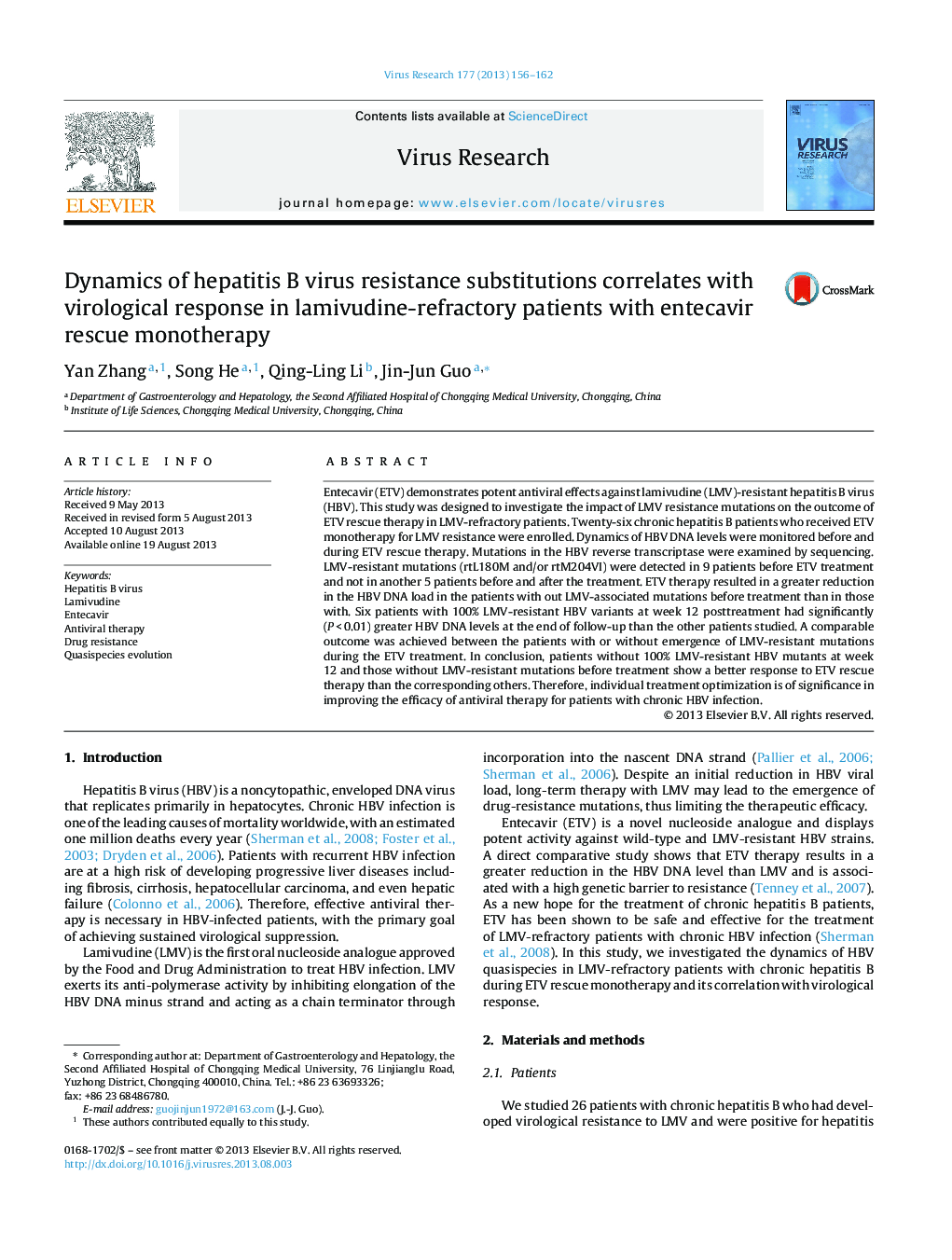| Article ID | Journal | Published Year | Pages | File Type |
|---|---|---|---|---|
| 6142784 | Virus Research | 2013 | 7 Pages |
â¢HBV quasispecies during the long-term entecavir treatment were well studied.â¢HBV quasispecies complexity was reduced in responders after entecavir therapy.â¢HBV quasispecies diversity was reduced in responders after entecavir treatment.
Entecavir (ETV) demonstrates potent antiviral effects against lamivudine (LMV)-resistant hepatitis B virus (HBV). This study was designed to investigate the impact of LMV resistance mutations on the outcome of ETV rescue therapy in LMV-refractory patients. Twenty-six chronic hepatitis B patients who received ETV monotherapy for LMV resistance were enrolled. Dynamics of HBV DNA levels were monitored before and during ETV rescue therapy. Mutations in the HBV reverse transcriptase were examined by sequencing. LMV-resistant mutations (rtL180M and/or rtM204VI) were detected in 9 patients before ETV treatment and not in another 5 patients before and after the treatment. ETV therapy resulted in a greater reduction in the HBV DNA load in the patients with out LMV-associated mutations before treatment than in those with. Six patients with 100% LMV-resistant HBV variants at week 12 posttreatment had significantly (PÂ <Â 0.01) greater HBV DNA levels at the end of follow-up than the other patients studied. A comparable outcome was achieved between the patients with or without emergence of LMV-resistant mutations during the ETV treatment. In conclusion, patients without 100% LMV-resistant HBV mutants at week 12 and those without LMV-resistant mutations before treatment show a better response to ETV rescue therapy than the corresponding others. Therefore, individual treatment optimization is of significance in improving the efficacy of antiviral therapy for patients with chronic HBV infection.
